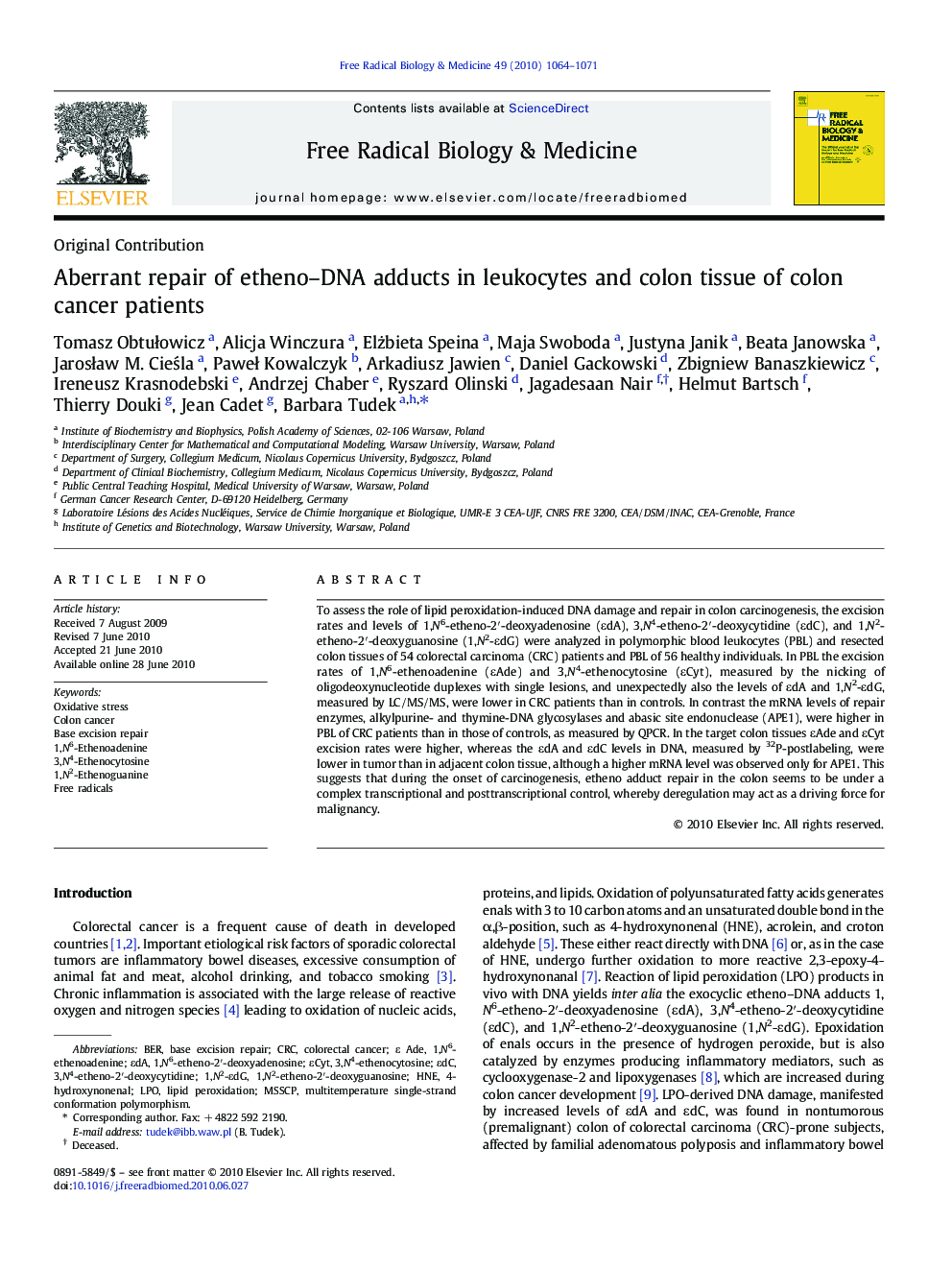| Article ID | Journal | Published Year | Pages | File Type |
|---|---|---|---|---|
| 1909864 | Free Radical Biology and Medicine | 2010 | 8 Pages |
Abstract
To assess the role of lipid peroxidation-induced DNA damage and repair in colon carcinogenesis, the excision rates and levels of 1,N6-etheno-2â²-deoxyadenosine (εdA), 3,N4-etheno-2â²-deoxycytidine (εdC), and 1,N2-etheno-2â²-deoxyguanosine (1,N2-εdG) were analyzed in polymorphic blood leukocytes (PBL) and resected colon tissues of 54 colorectal carcinoma (CRC) patients and PBL of 56 healthy individuals. In PBL the excision rates of 1,N6-ethenoadenine (εAde) and 3,N4-ethenocytosine (εCyt), measured by the nicking of oligodeoxynucleotide duplexes with single lesions, and unexpectedly also the levels of εdA and 1,N2-εdG, measured by LC/MS/MS, were lower in CRC patients than in controls. In contrast the mRNA levels of repair enzymes, alkylpurine- and thymine-DNA glycosylases and abasic site endonuclease (APE1), were higher in PBL of CRC patients than in those of controls, as measured by QPCR. In the target colon tissues εAde and εCyt excision rates were higher, whereas the εdA and εdC levels in DNA, measured by 32P-postlabeling, were lower in tumor than in adjacent colon tissue, although a higher mRNA level was observed only for APE1. This suggests that during the onset of carcinogenesis, etheno adduct repair in the colon seems to be under a complex transcriptional and posttranscriptional control, whereby deregulation may act as a driving force for malignancy.
Keywords
Related Topics
Life Sciences
Biochemistry, Genetics and Molecular Biology
Ageing
Authors
Tomasz ObtuÅowicz, Alicja Winczura, Elżbieta Speina, Maja Swoboda, Justyna Janik, Beata Janowska, JarosÅaw M. CieÅla, PaweÅ Kowalczyk, Arkadiusz Jawien, Daniel Gackowski, Zbigniew Banaszkiewicz, Ireneusz Krasnodebski, Andrzej Chaber,
